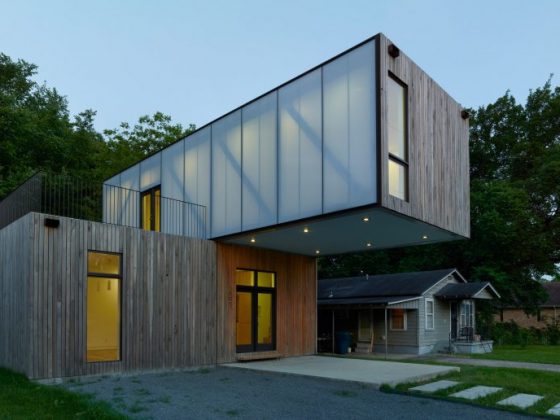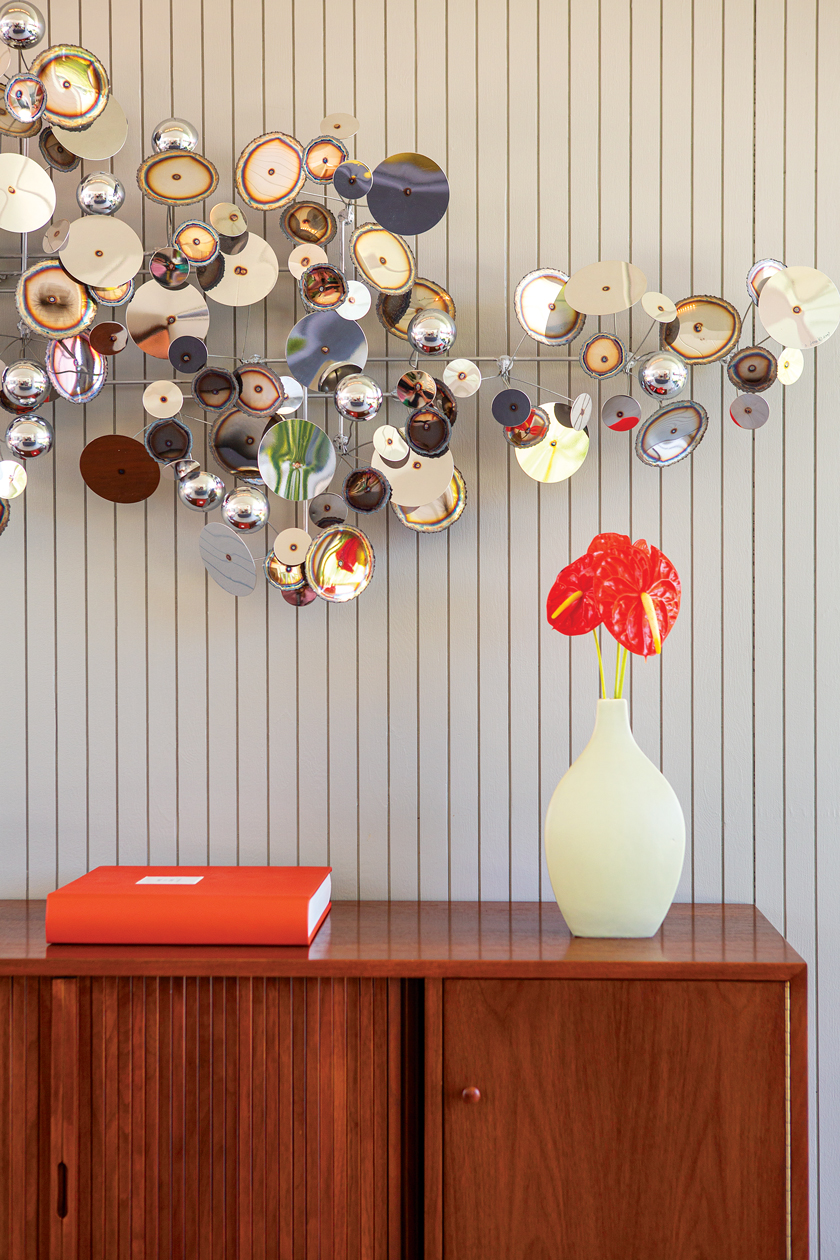“Mid Century Modern” refers to modernist architecture and design from the Mid Century period, which we usually define as ranging between the 1940s through the 1970s.
That is quite a broad category. You are probably aware that within that category, there are a number of different sub-styles. But you may not be familiar with their names and defining attributes. Let’s take a look at some Mid Century Modern sub-styles.
International Style

The photo above shows the Edith Farnsworth House, designed by Mies Van Der Rohe, and completed in 1950. This house is an example of the International Style, of which Mies was a major proponent.
Common characteristics of buildings in the International Style include modular forms, rectangles and flat surfaces, minimalism, open interiors, and lots of concrete, glass and steel. International Style buildings often feature lots of white and neutral colors.
Organic Modernism

The phrase “organic modernism” broadly refers to modernist architecture and design that incorporates inspiration from natural shapes and forms, along with materials from nature.
Some organic modernism preceded the Mid Century period. Organic modernism continued to flourish during the Mid Century, and remains a popular style today.
Frank Lloyd Wright was the most famous architect who designed organic modernist buildings. While much of his work came before the Mid Century, buildings like the Seth Peterson Cottage above near Lake Delton, WI, fell squarely into the Mid Century period. This cottage was completed in 1958.
Googie

The futuristic style of Googie evolved in Southern California out of Streamline Moderne. The simplest way to explain it is to tell you to think of the Jetsons, or of the famous LAX Theme Building pictured above.
Googie architecture features sloping roofs, acute angles, cantilevers, organic curves, tail fins, bright colors, boomerang shapes and starbursts. It became popular at roadside attractions, gas stations, restaurants, and the like.
Space Age

It is tempting to think that Googie and Space Age are interchangeable, but they are not. They do overlap significantly, but Googie is more specific.
“Space Age” refers to futuristic Mid Century Modern design starting in 1957, the year Sputnik launched, and ending in 1972, when the Apollo missions concluded. That is the period of history that we also term the “Space Age.”
There is a strong focus on interior design when we talk about Space Age modernism. Rather than just focusing on certain forms, Space Age focuses on the theme of space exploration. This Mid Mod collector’s Space Age office shows off the style beautifully.
As an example of Space Age design, we included the Eero Saarinen Tulip Chair above, which was designed in 1957. It popularly featured in science fiction films during the Mid Century, as well as in modern times.
Brutalism

Brutalism is an easily recognizable style characterized by raw concrete construction, imposing facades, geometric shapes and neutral colors.
The name “brutalism” does not refer to the “brutal” look many people feel the style has, but rather than French phrase “béton brut,” which means “raw concrete.”
While brutalism is commonly associated with the Soviet Union and totalitarian regimes, it was also very popular in the post-war period in Europe. It was designed to be practical and affordable in order to meet peoples’ basic needs more effectively in the face of scarcity.
Regional MCM Styles

Finally, there are some regional sub-styles of Mid Century Modern architecture and design you can explore. One of the best-known examples is the Northwest Regional style popularized by John Yeon. Palm Springs, California also has its own distinct style of Desert Modernism. There is also the Sarasota School, and Midwest Modernism, each with their own distinctive take on the design.
Of course, the movement was not confined to the United States. There are plenty of international regional styles of Mid Century Modern architecture too, such as Brazilian Modernism.
If you enjoyed this post, you may also like Googie Architecture: A Stroll Down Memory Lane and What is International Style? And of course, don’t forget to follow us on Instagram, Facebook, Pinterest and YouTube for more Atomic Ranch articles, house tours, and ideas!












